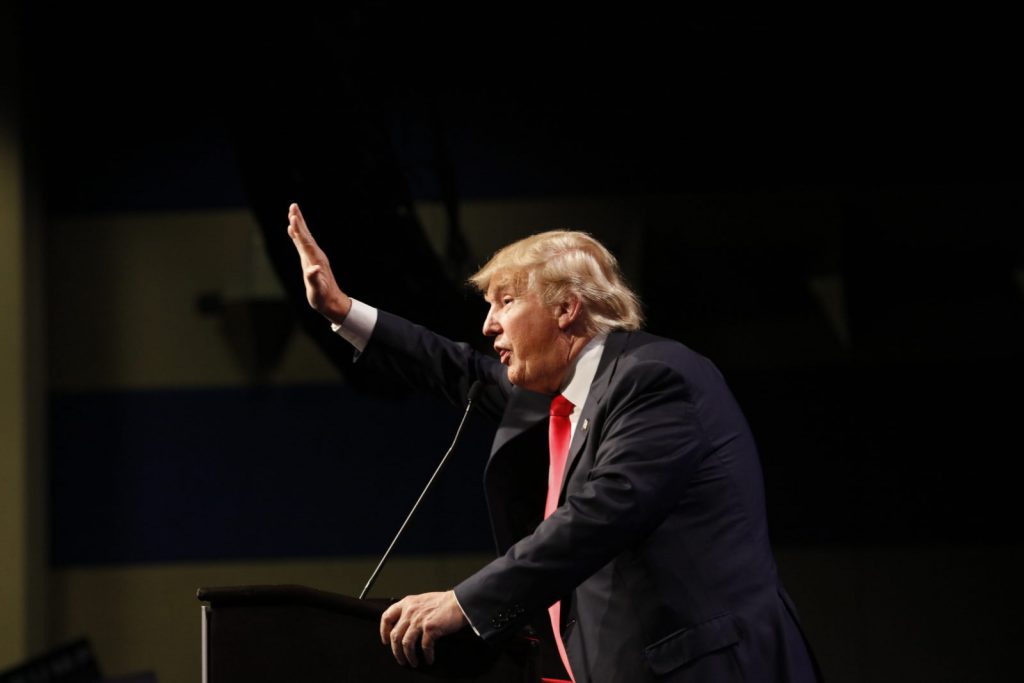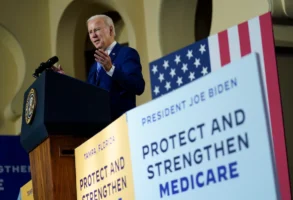
Published October 31, 2017
Former White House Chief Strategist Steve Bannon’s campaign to unseat “establishment” Republican senators could remake the GOP — but not necessarily for the better.
The constituencies he hopes to mobilize are a majority of Republicans in deep red states. However, establishment Republican voters are key to winning more marginal states. Without a careful strategy to keep those voters behind his preferred candidates, Bannon’s effort may end up as a more populist version of the 2010-2014 Tea Party challengers whose failures to capture swing states pushed the party too far to the right to build a national majority.
His effort depends on creating an alliance between Trump populists and Tea Party, Texas Sen. Ted Cruz-style conservatives. Recent research from Cato’s Emily Ekins shows that these groups are easily a majority of Republican voters nationwide. Unite them behind a challenger and unseating more traditional, business-friendly or moderate Republicans is quite possible.
These voters disagree about a lot of issues, however. Ekins’ research shows that Trump populists value entitlement spending, get their health insurance from Medicaid or the ObamaCare exchanges, and want higher taxes on the rich. Cruz conservatives, labeled “Staunch Conservatives” in her research, want to cut entitlement spending, repeal ObamaCare without much concern about what replaces it, and oppose higher taxes for anyone. Nor do they agree on social issues. Trump populists don’t go to church and are ambivalent about abortion or same-sex marriage. Cruz conservatives are deeply religious and very socially conservative.
This coalition only agrees on a few issues: immigration, the Muslim travel ban, and other matters of cultural identity. Some of the incumbents Bannon wants to target may be vulnerable on these issues, but the smarter among them will have long ago inoculated themselves. That’s how senators like Orrin Hatch (R-Utah) defended themselves against Tea Party challengers a few years ago: Move slightly to the right to defuse the issues that can mobilize your potential opponents.
Arizona’s Jeff Flake declared he wouldn’t run for re-election in the face of such a challenge precisely because he was unwilling to move an inch to accommodate public opinion. Purported Bannon targets like Mississippi’s Roger Wicker would have to be asleep at the switch to be so easily caught napping.
This makes it likely that potential challenges will rely more on tribal opposition to Senate leader Mitch McConnell (R-Ky.) than any substantive agenda. Cruz conservatives and Trump populists agree that McConnell and his team are problems even as they disagree strenuously over what their alleged malfeasance is keeping them from doing. Bannon-backed challengers will therefore likely run deeply personal, negative campaigns because that is the only way they can avoid discussing the policy differences that could otherwise divide them. That could produce very hollow victories because many states they look to be active in could easily support a Democrat if the Republican is too polarizing.
Nevada is an excellent example of this dynamic. Public polls show conservative challenger Danny Tarkanian leading incumbent Senator Dean Heller among Republican primary voters. But Nevada is a swing state, one that Republican presidential candidates have lost in three straight elections. Outgoing Republican governor Brian Sandoval is a moderate who has raised taxes and expanded Medicaid in response to ObamaCare. Tarkanian is known as a rabid conservative and is very unlikely to attract the swing voters he needs to win statewide. Add to that thousands of traditional Republicans turned off by the scorched earth tactics he will likely employ to win and you have a recipe for a Democratic pickup.
Ekins’ research again shows why this phenomenon can repeat itself in state after state. A bit under a third of Trump’s general election voters are what she labels “Free Marketeers.” These voters disagree with the conservative-populist views on immigration and identity. They like establishment leaders like House Speaker Paul Ryan (R-Wis.) and many voted for Trump only because they disliked Hillary Clinton more. Make them and their ideals the focus of negative campaigning and they will be much less likely to come home and back the Republican nominee who vociferously denounced them.
Other Republicans, those who voted for Mitt Romney in 2012 but did not vote for Donald Trump in 2016, will join them. These people vote in party primaries, and they disagree even more with the conservative-populist views on matters of identity and the virtues of traditional Republican leadership. Their general election votes aren’t necessary in deep red states like Alabama, where post-primary polls show that even a figure as divisive as judge Roy Moore is still easily favored to win.
States like Arizona, Florida, Ohio, and Pennsylvania, however, are close enough that failure to win their votes would likely doom the GOP nominee. Add disaffected Free Marketeers to their votes and the GOP could be looking at blowing a generational chance to pad its Senate majority.
The Republican Party suffers from a huge disconnect between its factions. Traditional Republicans have placed Cruz-style conservatives at the back of the bus for way too long. Both wings of the party have dismissed concerns of blue-collar populists for even longer. Each of these groups, however, needs to the others to form a majority. The answer to one group’s being sent to the back of the bus is not to put the old group back there in retribution. The only plausible solution is to collaboratively work out a system for sharing driving and riding the bus in equal measures.
If Bannon and his challengers don’t pursue this tack, they will simply replace one set of unrepresentative leaders with another, hurting the very president whose agenda he purports to support.
Henry Olsen is a senior fellow at the Ethics and Public Policy Center. His recent book, “The Working Class Republican: Ronald Reagan and the Return of Blue-Collar Conservatism,” looks at how Reagan united populists, conservatives, and traditional Republicans to form a new national majority.





